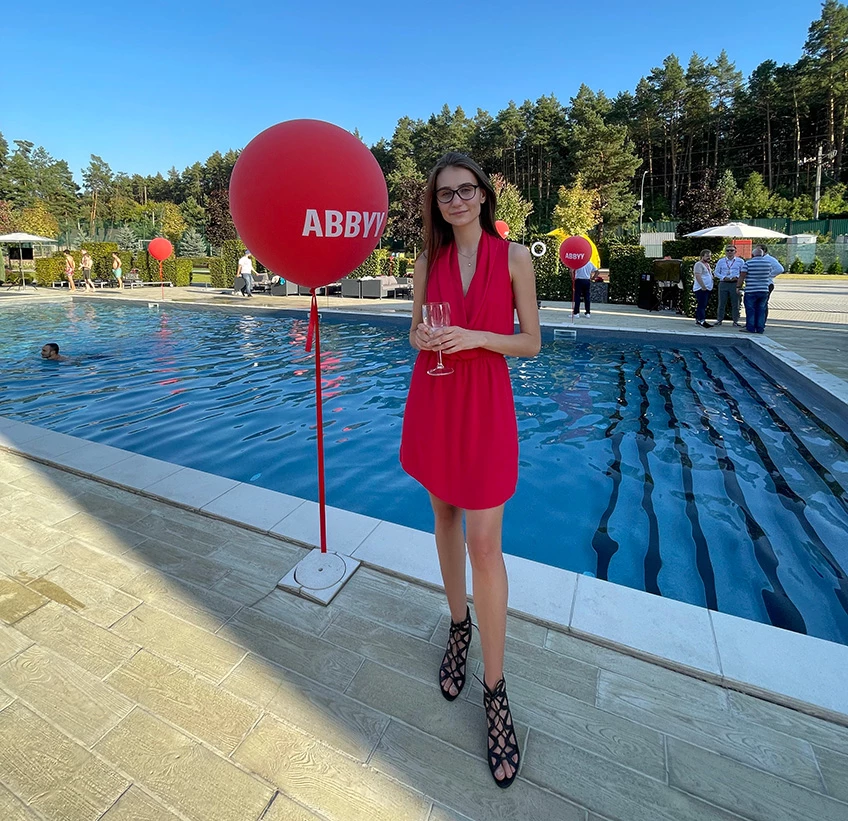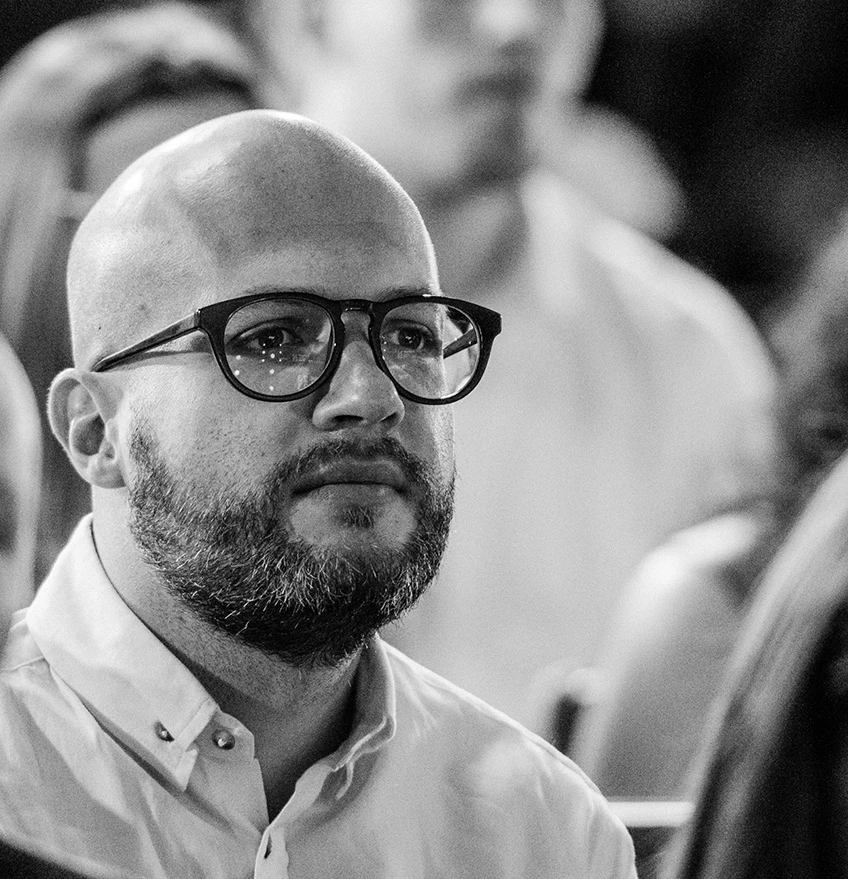
The Future of Creative Tech - Embrace the WCID 202N with ABBYY Insights

The Future of Creative Tech - Embrace the WCID 202N with ABBYY Insights
World Creativity and Innovation Day: Conversations with the ABBYY Team
April 22, 2024
Here at ABBYY, fostering a culture of creativity and innovation is key to our shared success. World Creativity and Innovation Day, celebrated on April 21st, has just passed and to mark the occasion, we sat down with colleagues from across our offices and departments to learn a bit more about their thoughts on the importance of creativity, the future of human creativity, and how they use creativity in their field of work.
First Maxime, our Sr. Director of AI Strategy, weighed in on a hot topic, aligned with his expertise, namely the idea that artificial intelligence (AI) could kill human creativity in the long run. What stood out from our conversation was the following idea he shared around the future of collaboration with AI:
“AI is your personal BB-8 or R2-D2—stellar problem solvers who aren’t just there to execute orders but to inspire and collaborate with you on your creative quests. It’s like having a brainstorming buddy, offering perspectives so unique they often catapult you from A to Z in a single hyperjump, bypassing the need to go through the entire alphabet.
The beauty of AI lies in its ability to spark those “aha” moments, presenting solutions and ideas from angles we might not have considered. It’s not a creativity killer; it’s a creativity amplifier, enabling more people than ever to unlock and unleash their creative potential. But, as with any tool, there’s a learning curve. Mastering the art of collaboration with AI is key—it’s about learning to pilot your ship together and exploring new frontiers. AI doesn’t eclipse human creativity; it enhances it, making the canvas of our thoughts richer and infinitely more expansive.”
The beauty of AI lies in its ability to spark those “aha” moments, presenting solutions and ideas from angles we might not have considered. It’s not a creativity killer; it’s a creativity amplifier, enabling more people than ever to unlock and unleash their creative potential.
Max Vermier, Senior Director of AI Strategy, Global

How does change impact creative thinking?
We then talked to Alina who, since joining ABBYY over five years ago has moved not only departments, from customer excellence to sales, but also relocated from Ukraine to France. We asked how these changes influenced her creative thinking:
“While working in customer support, I’ve gained invaluable skills in empathetic communication and problem-solving, and creativity served me well in some not-so-standard situations where I had to solve problems for customers.
Now, working as part of our business development team, I expect to further develop my creative problem-solving skills as I come across new tasks and challenges that I am not familiar with. This is a place for creativity to come to the spotlight in the form of approaches, strategies, and ideas to transform all those challenges into solutions. In this dynamic landscape, where every interaction with a potential customer is an opportunity, creativity isn’t just a luxury – it’s a requisite for securing a win!”
In this dynamic landscape, where every interaction with a potential customer is an opportunity, creativity isn’t just a luxury – it’s a requisite for securing a win!
Alina Poplavska, Business Development Representative, France


What does creativity look like in legal or finance?
We know that creativity is a multifaceted gem, and its role is important even in lines of work that might not traditionally be thought of as creative. That’s why we caught up with our colleagues from our Legal department, Maksym and Filip, and Marija, from Finance.
“Balancing creativity with the structured nature of legal work enables us lawyers to navigate the demands of our profession while leveraging creativity to achieve favourable outcomes” said Maksym, our Regional Leal Counsel based in Ukraine “It is important to recognize the areas where creativity is appropriate and where it might be less so. For instance, creative and persuasive language is invaluable when presenting arguments or explaining complex legal concepts.
However, creativity must be balanced with professionalism and ethical considerations to ensure that any creative strategies or arguments remain within the bounds of legal ethics and professional standards.”
It is important to recognize the areas where creativity is appropriate and where it might be less so. For instance, creative and persuasive language is invaluable when presenting arguments or explaining complex legal concepts.
Maksym Naumko, Regional Legal Counsel, Ukraine

On a similar note, Filip shared that “as a Senior Lawyer with a decade of experience, balancing the need for creativity with the demands of my job’s structured or strict nature is essential for delivering effective legal services. While the legal field often operates within established frameworks and precedents, creativity is paramount in finding innovative solutions to complex legal problems”. He then told us more about how, contrary to most people’s perception, creativity is indeed key to lawyers’ line of work, especially for finding the appropriate solutions to various challenges by “proactively identifying areas where innovative legal solutions can drive business growth and mitigate risks.”
“This might involve developing novel contract structures to facilitate strategic partnerships or devising creative compliance frameworks to adapt to evolving regulatory landscapes.” - he added.
Creativity and efficiency go hand-in-hand for Filip who also told us that_“effective time management plays a crucial role in balancing creativity with structure. By allocating specific blocks of time for creative brainstorming sessions and strategic planning, I ensure that innovative ideas are incorporated into my legal practice without compromising on the rigorous demands of legal work.”_
By allocating specific blocks of time for creative brainstorming sessions and strategic planning, I ensure that innovative ideas are incorporated into my legal practice without compromising on the rigorous demands of legal work.”
Filip Horvat, Senior Lawyer, Global

How can AP benefit from creative thinking?
_“Creativity might not be the first word that springs to mind when talking about Finance and Accounting.”_said Marija from our Accounts Payable team. “Despite this field being typically associated with more structured and procedural tasks, my role challenges me to look beyond the numbers and find creative solutions to optimize processes, enhance efficiency, and mitigate risks. It’s about transforming the conventional into something extraordinary.
Creative thinking empowers me to contribute strategically to the organization’s overall goals and think about how AP processes align with broader business strategies, identify opportunities for value creation, and propose new initiatives.
At the same time, I am trying to encourage team members to think creatively and be innovative in their approach to AP processes. This strengthens professional growth and keeps the team engaged and motivated. By embracing that, we’re not only streamlining our workflows but also setting new standards for excellence.” she concluded.
Creative thinking empowers me to contribute strategically to the organization’s overall goals and think about how AP processes align with broader business strategies, identify opportunities for value creation, and propose new initiatives.
Marija Vukanovic, Head of Accounts Payable, Global

How can creativity thinking be fostered across departments?
Alona, part of our Fulfilment team, shared insights from her experiences working closely with Asia-Pacific (APAC) sales teams. We explored the role of creative thinking for collaboration between departments and asked how she sees different creative approaches complementing each other when solving problems for customers.
“Creative input is always welcome in our dynamic collaboration, as it allows us to approach tasks from different angles, fostering a more holistic understanding of the problem at hand. We know that diversity of thought leads to richer discussions and ultimately better results for our clients.
When brainstorming creative ideas, we use our collective creativity to break tasks down into smaller, more manageable details. This approach allows us to identify opportunities for improvement in areas that may not be obvious, ensuring that our solutions are comprehensive and effective.
To effectively complement each other’s creative input, we take the time to truly listen to each other’s ideas to understand the perspective and explore ways to expand and improve upon them together. In doing so, we see the strengths of the idea. Constructive feedback is part of the culture, so being supportive is a must.
My favourite part of the process is recognizing and celebrating the successes that come from a collaborative effort. Acknowledge each team member’s contributions and their roles in working toward shared goals. Together, we’re able to harness the power of diverse perspectives to deliver exceptional value to our customers and exceed their expectations.”
To effectively complement each other’s creative input, we take the time to truly listen to each other’s ideas to understand the perspective and explore ways to expand and improve upon them together. In doing so, we see the strengths of the idea. Constructive feedback is part of the culture, so being supportive is a must.
Alona Mukomelets, APAC Fulfillment Team Lead

If you are inspired by our colleagues and would like to join the ABBYY team, we invite you to explore more about life at ABBYY and discover exciting opportunities to join our team on our careers page .
Subscribe for blog updates
First name*
E-mail*
Сountry*
СountryAfghanistanAland IslandsAlbaniaAlgeriaAmerican SamoaAndorraAngolaAnguillaAntarcticaAntigua and BarbudaArgentinaArmeniaArubaAustraliaAustriaAzerbaijanBahamasBahrainBangladeshBarbadosBelgiumBelizeBeninBermudaBhutanBoliviaBonaire, Sint Eustatius and SabaBosnia and HerzegovinaBotswanaBouvet IslandBrazilBritish Indian Ocean TerritoryBritish Virgin IslandsBrunei DarussalamBulgariaBurkina FasoBurundiCambodiaCameroonCanadaCape VerdeCayman IslandsCentral African RepublicChadChileChinaChristmas IslandCocos (Keeling) IslandsColombiaComorosCongo (Brazzaville)Congo, (Kinshasa)Cook IslandsCosta RicaCroatiaCuraçaoCyprusCzech RepublicCôte d’IvoireDenmarkDjiboutiDominicaDominican RepublicEcuadorEgyptEl SalvadorEquatorial GuineaEritreaEstoniaEthiopiaFalkland Islands (Malvinas)Faroe IslandsFijiFinlandFranceFrench GuianaFrench PolynesiaFrench Southern TerritoriesGabonGambiaGeorgiaGermanyGhanaGibraltarGreeceGreenlandGrenadaGuadeloupeGuamGuatemalaGuernseyGuineaGuinea-BissauGuyanaHaitiHeard and Mcdonald IslandsHoly See (Vatican City State)HondurasHong Kong, SAR ChinaHungaryIcelandIndiaIndonesiaIraqIrelandIsle of ManIsraelITJamaicaJapanJerseyJordanKazakhstanKenyaKiribatiKorea (South)KuwaitKyrgyzstanLao PDRLatviaLebanonLesothoLiberiaLibyaLiechtensteinLithuaniaLuxembourgMacao, SAR ChinaMacedonia, Republic ofMadagascarMalawiMalaysiaMaldivesMaliMaltaMarshall IslandsMartiniqueMauritaniaMauritiusMayotteMexicoMicronesia, Federated States ofMoldovaMonacoMongoliaMontenegroMontserratMoroccoMozambiqueMyanmarNamibiaNauruNepalNetherlandsNetherlands AntillesNew CaledoniaNew ZealandNicaraguaNigerNigeriaNiueNorfolk IslandNorthern Mariana IslandsNorwayOmanPakistanPalauPalestinian TerritoryPanamaPapua New GuineaParaguayPeruPhilippinesPitcairnPolandPortugalPuerto RicoQatarRomaniaRwandaRéunionSaint HelenaSaint Kitts and NevisSaint LuciaSaint Pierre and MiquelonSaint Vincent and GrenadinesSaint-BarthélemySaint-Martin (French part)SamoaSan MarinoSao Tome and PrincipeSaudi ArabiaSenegalSerbiaSeychellesSierra LeoneSingaporeSint Maarten (Dutch part)SlovakiaSloveniaSolomon IslandsSouth AfricaSouth Georgia and the South Sandwich IslandsSouth SudanSpainSri LankaSurinameSvalbard and Jan Mayen IslandsSwazilandSwedenSwitzerlandTaiwan, Republic of ChinaTajikistanTanzania, United Republic ofThailandTimor-LesteTogoTokelauTongaTrinidad and TobagoTunisiaTurkeyTurks and Caicos IslandsTuvaluUgandaUkraineUnited Arab EmiratesUnited KingdomUnited States of AmericaUruguayUS Minor Outlying IslandsUzbekistanVanuatuVenezuela (Bolivarian Republic)Viet NamVirgin Islands, USWallis and Futuna IslandsWestern SaharaZambiaZimbabwe
I have read and agree with the Privacy policy and the Cookie policy .
I agree to receive email updates from ABBYY Solutions Ltd. such as news related to ABBYY Solutions Ltd. products and technologies, invitations to events and webinars, and information about whitepapers and content related to ABBYY Solutions Ltd. products and services.
I am aware that my consent could be revoked at any time by clicking the unsubscribe link inside any email received from ABBYY Solutions Ltd. or via ABBYY Data Subject Access Rights Form .
Referrer
Last name
Query string
Product Interest Temp
UTM Campaign Name
UTM Medium
UTM Source
ITM Source
GA Client ID
UTM Content
GDPR Consent Note
Captcha Score
Page URL
Connect with us
- Title: The Future of Creative Tech - Embrace the WCID 202N with ABBYY Insights
- Author: Robert
- Created at : 2024-08-21 17:14:03
- Updated at : 2024-08-22 17:14:03
- Link: https://techtrends.techidaily.com/the-future-of-creative-tech-embrace-the-wcid-202n-with-abbyy-insights/
- License: This work is licensed under CC BY-NC-SA 4.0.
